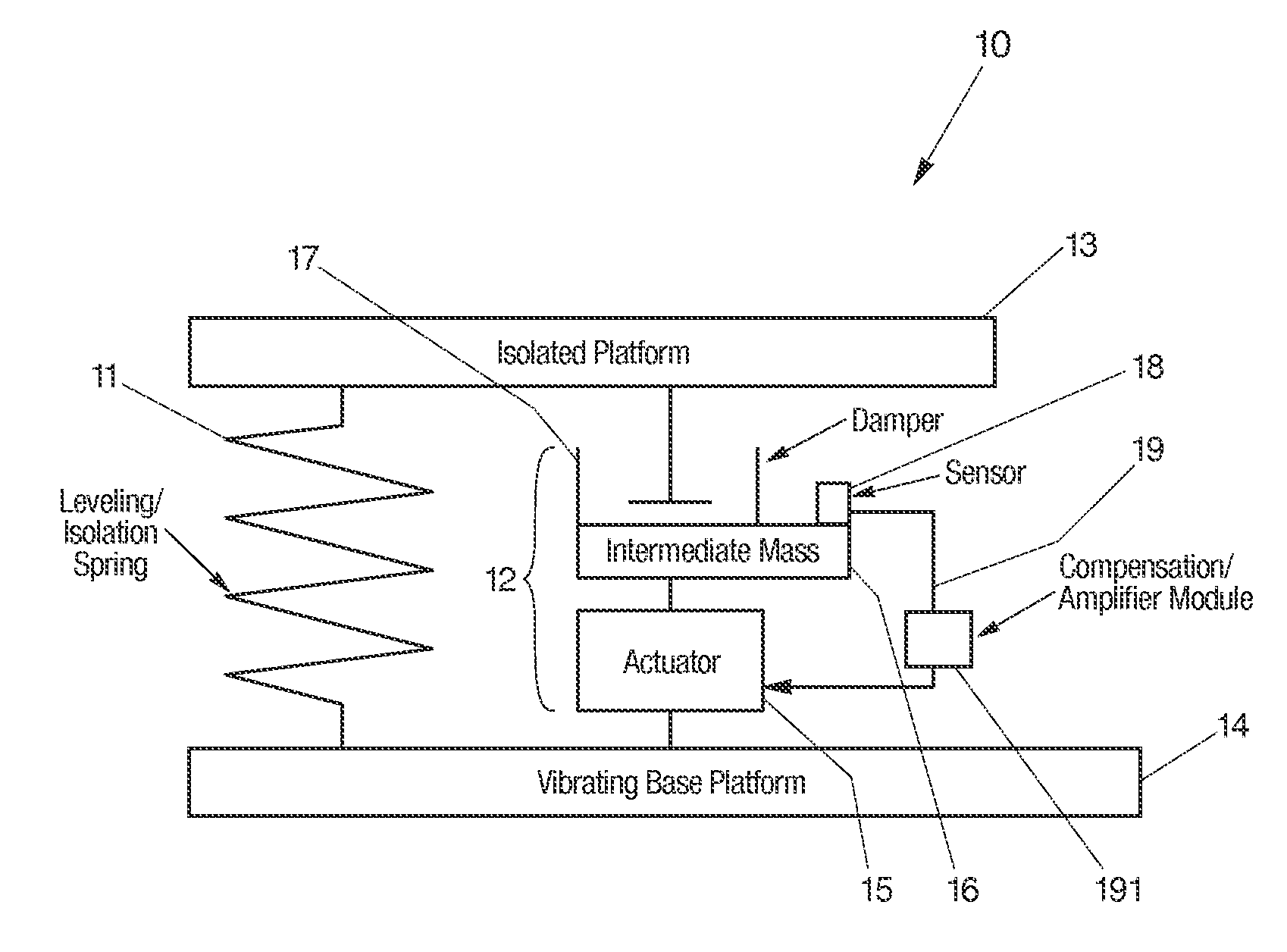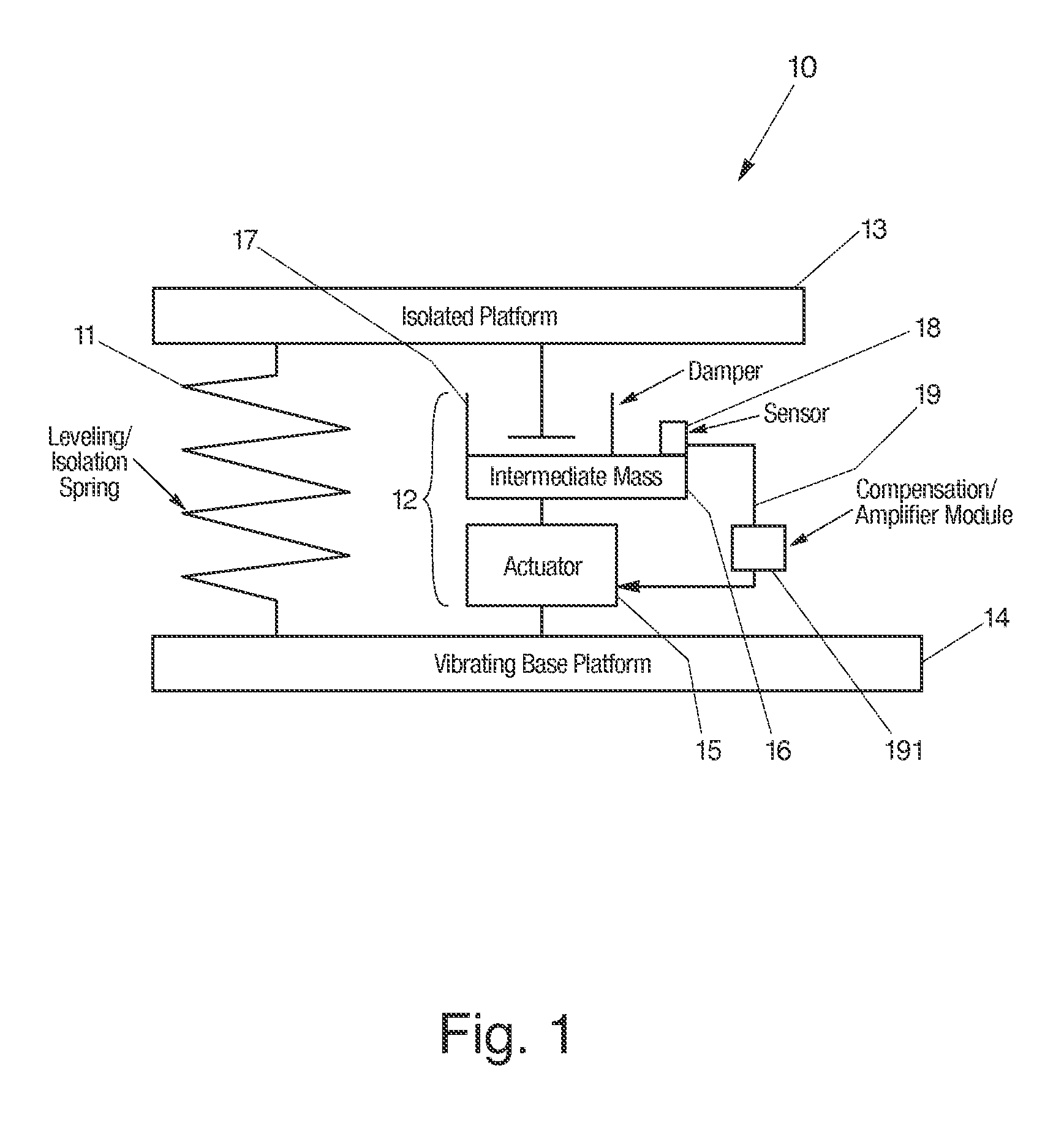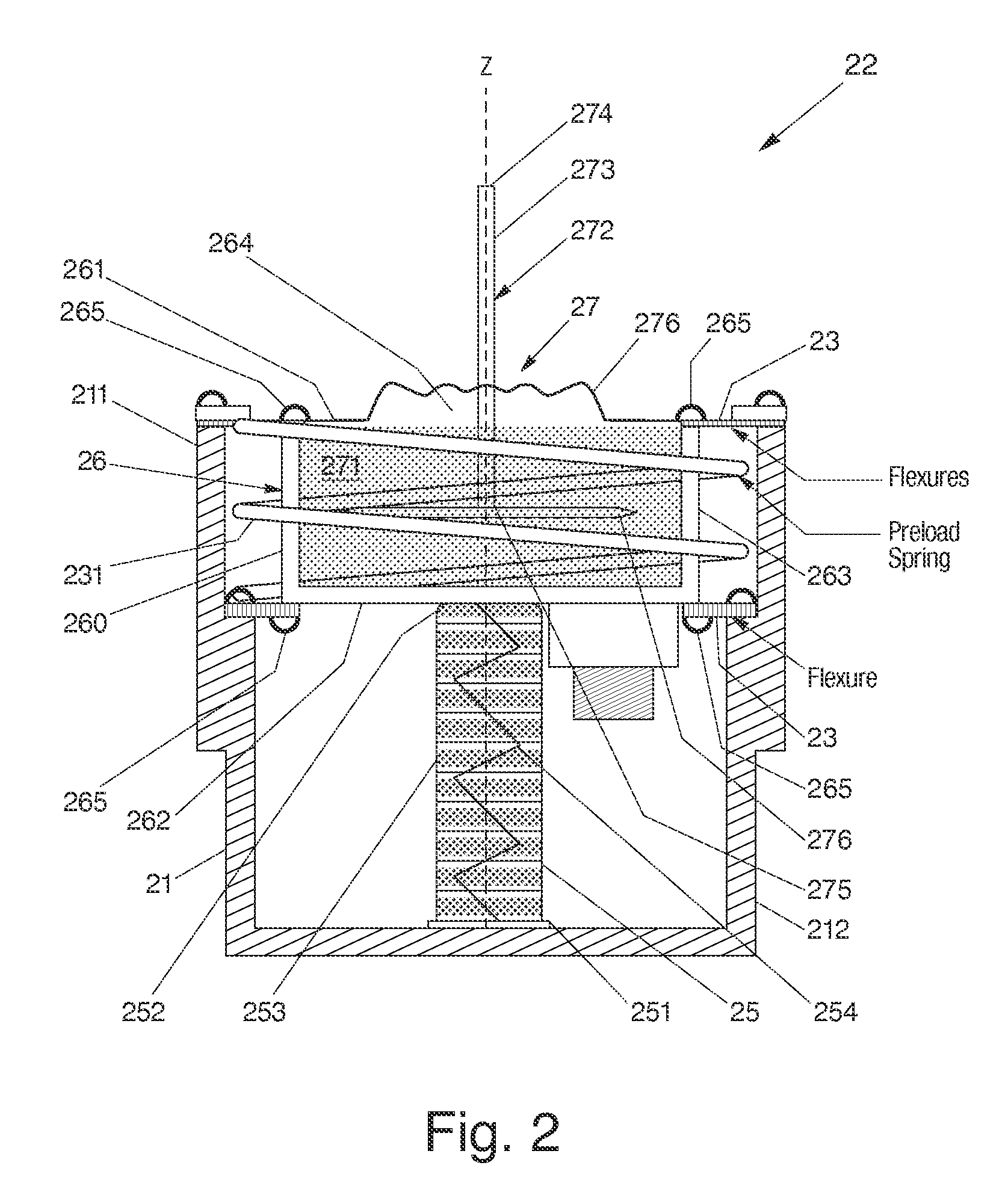Systems and methods for active vibration damping
a technology of active vibration and damping, applied in the field of active vibration damping systems, can solve the problems of shifting up the resonance frequency of the system, affecting the performance of the system, and requiring a relatively high level of damping, so as to minimize the vibration experienced and minimize the effect of feedback instability of the system
- Summary
- Abstract
- Description
- Claims
- Application Information
AI Technical Summary
Benefits of technology
Problems solved by technology
Method used
Image
Examples
Embodiment Construction
[0019]Supported payload typically generates static and dynamic forces, both of which must be addressed when compensating or minimizing the vibration caused by payload movement. To address both of these forces, the present invention provides a vibration damping system that decouples static and dynamic forces generated by a supported payload and permits each of the two forces to be addressed by separate mechanisms.
[0020]In FIG. 1, the present invention provides an active vibration damping system 10 that can resist or minimize supported payload movement due to payload-induced forces through the use of a supporting spring 11 for addressing static forces, and an independent actively isolated damper 12 (“active damper”) positioned in parallel to and spaced relation from the spring 11 for addressing dynamic forces. Both the spring 11 and active damper 12 may be positioned between a payload mass, such as that on or including an isolated platform 13, and a source of vibration, such as the fl...
PUM
 Login to View More
Login to View More Abstract
Description
Claims
Application Information
 Login to View More
Login to View More - R&D
- Intellectual Property
- Life Sciences
- Materials
- Tech Scout
- Unparalleled Data Quality
- Higher Quality Content
- 60% Fewer Hallucinations
Browse by: Latest US Patents, China's latest patents, Technical Efficacy Thesaurus, Application Domain, Technology Topic, Popular Technical Reports.
© 2025 PatSnap. All rights reserved.Legal|Privacy policy|Modern Slavery Act Transparency Statement|Sitemap|About US| Contact US: help@patsnap.com



